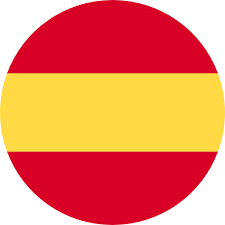The landscape of Canadian immigration is undergoing a significant strategic transformation, marked by a moderation in admission targets and a renewed focus on specific applicant profiles. If you are considering immigrating to Canada or already in the country on temporary status, it is crucial to understand these changes to adapt your immigration strategy effectively.
Targets for Permanent and Temporary Residents (2026–2028)
According to the new 2026–2028 Immigration Plan, Canada aims to admit 380,000 permanent residents while introducing drastic cuts in temporary resident admissions, including students and workers.
At the same time, the system faces critical challenges, such as extreme delays in humanitarian application processing, which can reach up to 600 months, and the impending legislative changes under Bill C-12, which could tighten asylum policies and accelerate deportations.
The notion of “easy immigration” to Canada is misleading; the process is rigorous, legally structured, and increasingly selective.
1. Strategic Approach of the Canadian Government
The Canadian government has outlined a migration policy focused on two fundamental pillars for 2026 and beyond, aimed at aligning immigration with the country’s domestic needs.
- Prioritization of Internal Candidates: Current policy focuses on facilitating the transition to permanent residency for individuals already in Canada with student or temporary worker status. The government has been clear that applications from abroad are not the main focus at this time.
- Encouragement of Francophone Immigration: There is a deliberate effort to promote French-speaking immigration. As reflected in the 2025 draws data, this category has received a disproportionately high number of invitations, validating the policy directive to strengthen Francophone communities outside Quebec.
2. Express Entry Draw Analysis (2025)
So far in 2025, 48 draws have been conducted across the various Express Entry categories. Currently, a total of 245,706 candidates are in the Express Entry pool, waiting for an invitation.
In comparison, the number of draws for the Canadian Experience Class (CEC) in 2025 has been 12 draws, equivalent to 23,850 invitations. This means that only 9.7% of applicants received an invitation through this category. And an invitation is not a guarantee; it is merely the first step in a complex approval process.
Meanwhile, although competition in the general categories is fierce, the data reveal an unexpected route with a significant strategic advantage: French language proficiency.
Although the Francophone stream had fewer draws than the CEC in 2025 (7 vs. 12), it issued a considerably higher number of invitations. A total of 36,000 invitations were issued to Francophone candidates (14.5% of the total pool) compared to 22,850 invitations in the CEC (9.2%).
The most notable difference is in the Comprehensive Ranking System (CRS) scores required. For the CEC, scores have remained high, around 533 points.For Francophone candidates, scores have dropped as low as 379 points, with the most recent draw at 416 points. This is not just a preference; it is a separate, less competitive path to permanent residency, where a lower score can outperform a higher one in the general pool.
3. The Express Entry Pool
The distribution of candidates according to CRS scores reveals another important reality. The government has focused on inviting individuals in the 501–600 point range, which includes 26,414 candidates. This is why CEC draws consistently require scores above 530 points.
However, the more challenging fact is immediately below that range: in the 401–450 point bracket, there are 68,939 candidates. For this large group, experts suggest a discouraging outlook. Without a radical policy change or an unlikely exception, it is very unlikely they will receive an invitation. Their options are narrowing to either finding an alternative pathway or eventually returning to their home countries.
4. Systemic Challenges and Future Outlook
Beyond the numbers, there are critical factors shaping the immediate future of immigration to Canada:
- Humanitarian Processing Delays: The system faces an inventory crisis for humanitarian and compassionate applications, with processing times estimated between 12 and 600 months (50 years). Paradoxically, this occurs alongside unused admission quotas, suggesting inefficiencies in processing or an overwhelming number of unsubstantiated applications.
- Legislative and Policy Tightening:
The proposed Bill C-12 seeks to grant the Canada Border Services Agency (CBSA) greater authority, potentially resulting in:
- Faster removal of individuals without legal status
- Stricter control over immigration status
- Significant changes in asylum processing, potentially limiting access to protection
- Executive power to eliminate or modify immigration categories, putting humanitarian programs at risk
- Program Integrity and Control Measures: Stricter rules are being implemented for Post-Graduation Work Permits (PGWP) and Spousal Open Work Permits (SOWP) to ensure the integrity of the immigration system.
The competition for permanent residency in Canada will be more intense than ever. The government has outlined a strategy focused on prioritizing internal talent, strengthening Francophone immigration, and reducing reliance on external flows.
In this new reality, the key question is no longer just:
“How can I go to Canada?”
but rather:
“Is my profile truly aligned with what Canada is seeking today?”
Careful planning, strategic profile enhancement, and professional legal guidance are now essential for anyone seeking a realistic path to permanent residency.



